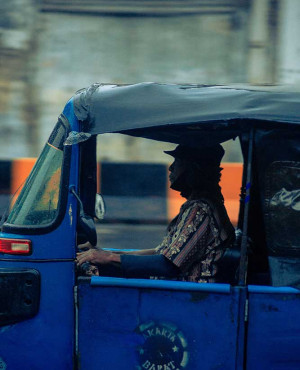
Jakarta – The Betawi people or Orang Betawi are considered to be the original inhabitants of Jakarta, the largest city and capital of Indonesia. Their presence has been recorded since the prehistoric era occupying the north portion of Java island. The name Betawi is etymologically derived from Batavia, the name given to Jakarta by the Dutch colonial administration. Betawi people are of mixed descent from different ethnic groups, such as the Javanese, Balinese, Sundanese, Buginese, Malay, Ambonese, Makassarese, European, Chinese, Arabic, and Indian, among others.
Betawis are the descendants of the people living around Batavia from around the 17th century. Being a trading port and the center of the Dutch colonial government, Jakarta was then occupied by settlers of different ethnic and cultural backgrounds. This gave rise to a new ethnic group over a span of more than two hundred years. Betawis constituted the majority of the city’s population but have been displaced after Indonesia gained its independence in 1945.
The presence of the Betawis is believed to have existed since the fifth century BC, as detailed in the book entitled Jakarta dari Tepian Air ke Kota Proklamasi by Sagimun Mulus Dumadi, 1988, and Historical Sites of Jakarta by Adolf Heuken SJ., 1995. When the Dutch Indies Company came to power and took control in the early seventeenth century, the different ethnic groups who settled in Batavia were assigned to walled compounds. Subsequently, interracial marriage occurred between different groups and gave rise to the Betawi.
The Betawi people inhabited most of the coastal areas but later moved to the middle portion and suburbs of the city. Those who lived in the coastal and central areas were influenced by the Malay culture and often worked as laborers, merchants, craftspeople, or government officers. Meanwhile, those inhabiting the suburbs and village areas were strongly influenced by Sundanese culture whose livelihood depends mostly on agriculture.
Betawis speak a unique form of the Malay language—a Malay-based creole that borrows extensive words from Hokkien, Chinese, Arabic, Portuguese, and Dutch languages as well as other local languages. It is listed as one of the country’s active local languages and spoken by about 2.7 million people in Greater Jakarta. Moreover, Betawi is one of the most widely-spoken among Indonesia’s 746 indigenous languages. The traditional older generation of Betawi people speak a more formal Betawi Malay language.
The influx of tourists in Jakarta in recent decades have brought many changes among the Betawi people. To promote their cultural identity and prevent their traditions from being buried beneath a tide of modernization, two projects, namely, the Betawi Cultural Village in South Jakarta and the Modern Kampung of Kemang, were built. At present, Jakarta’s predominant ethnic groups constitute of Betawi, Chinese, and Sundanese from West Java, as well as the Javanese from Central and Eastern Java. Furthermore, the change in traditional areas that have been converted into modern facilities have gradually pushed Betawi in the provinces such as the West Java Province, DKI Jakarta Province, and Banten Province.
Image from Sabda Rhamadhoni, https://unsplash.com/@sabda



